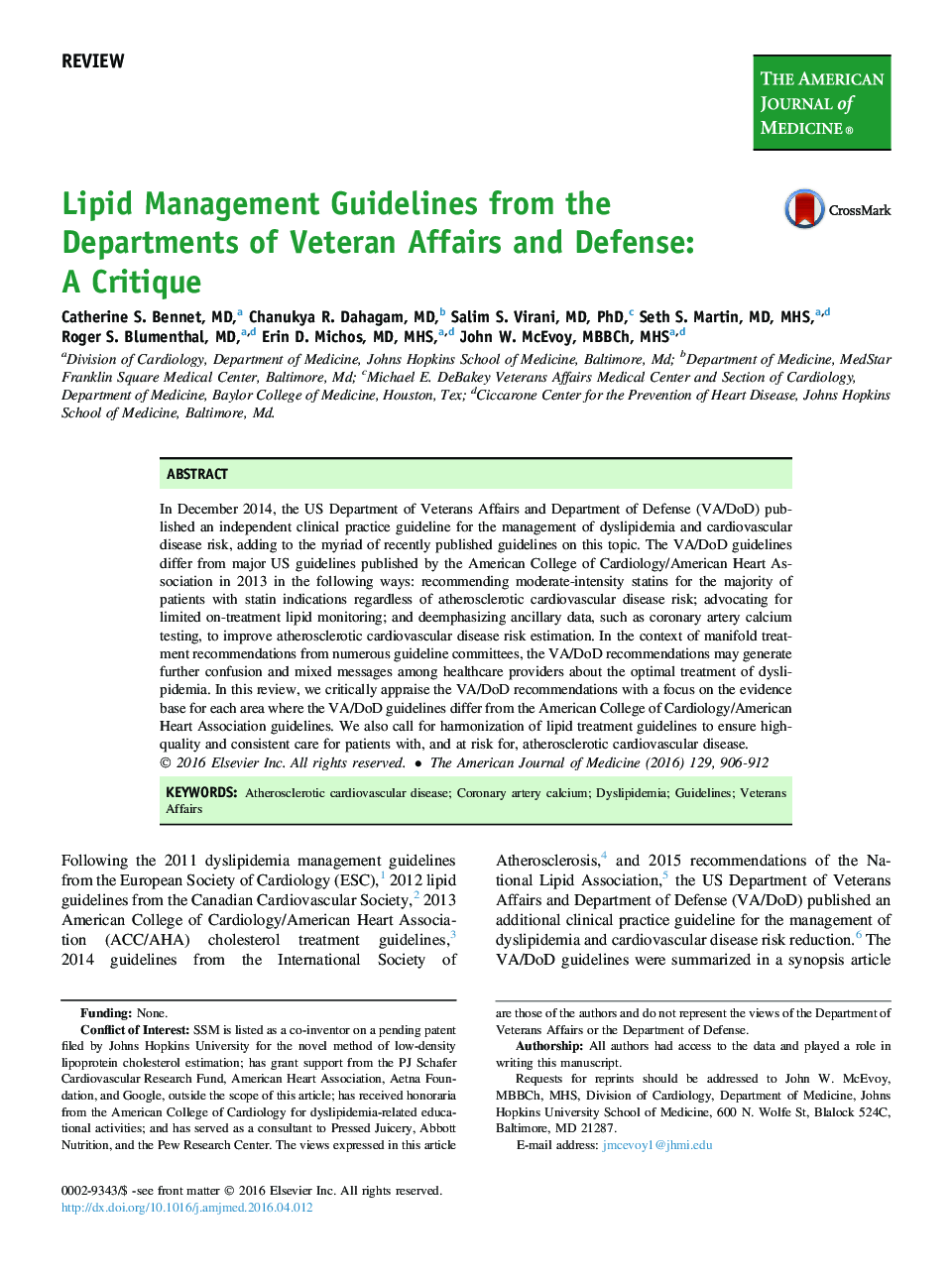| Article ID | Journal | Published Year | Pages | File Type |
|---|---|---|---|---|
| 2718275 | The American Journal of Medicine | 2016 | 7 Pages |
In December 2014, the US Department of Veterans Affairs and Department of Defense (VA/DoD) published an independent clinical practice guideline for the management of dyslipidemia and cardiovascular disease risk, adding to the myriad of recently published guidelines on this topic. The VA/DoD guidelines differ from major US guidelines published by the American College of Cardiology/American Heart Association in 2013 in the following ways: recommending moderate-intensity statins for the majority of patients with statin indications regardless of atherosclerotic cardiovascular disease risk; advocating for limited on-treatment lipid monitoring; and deemphasizing ancillary data, such as coronary artery calcium testing, to improve atherosclerotic cardiovascular disease risk estimation. In the context of manifold treatment recommendations from numerous guideline committees, the VA/DoD recommendations may generate further confusion and mixed messages among healthcare providers about the optimal treatment of dyslipidemia. In this review, we critically appraise the VA/DoD recommendations with a focus on the evidence base for each area where the VA/DoD guidelines differ from the American College of Cardiology/American Heart Association guidelines. We also call for harmonization of lipid treatment guidelines to ensure high-quality and consistent care for patients with, and at risk for, atherosclerotic cardiovascular disease.
